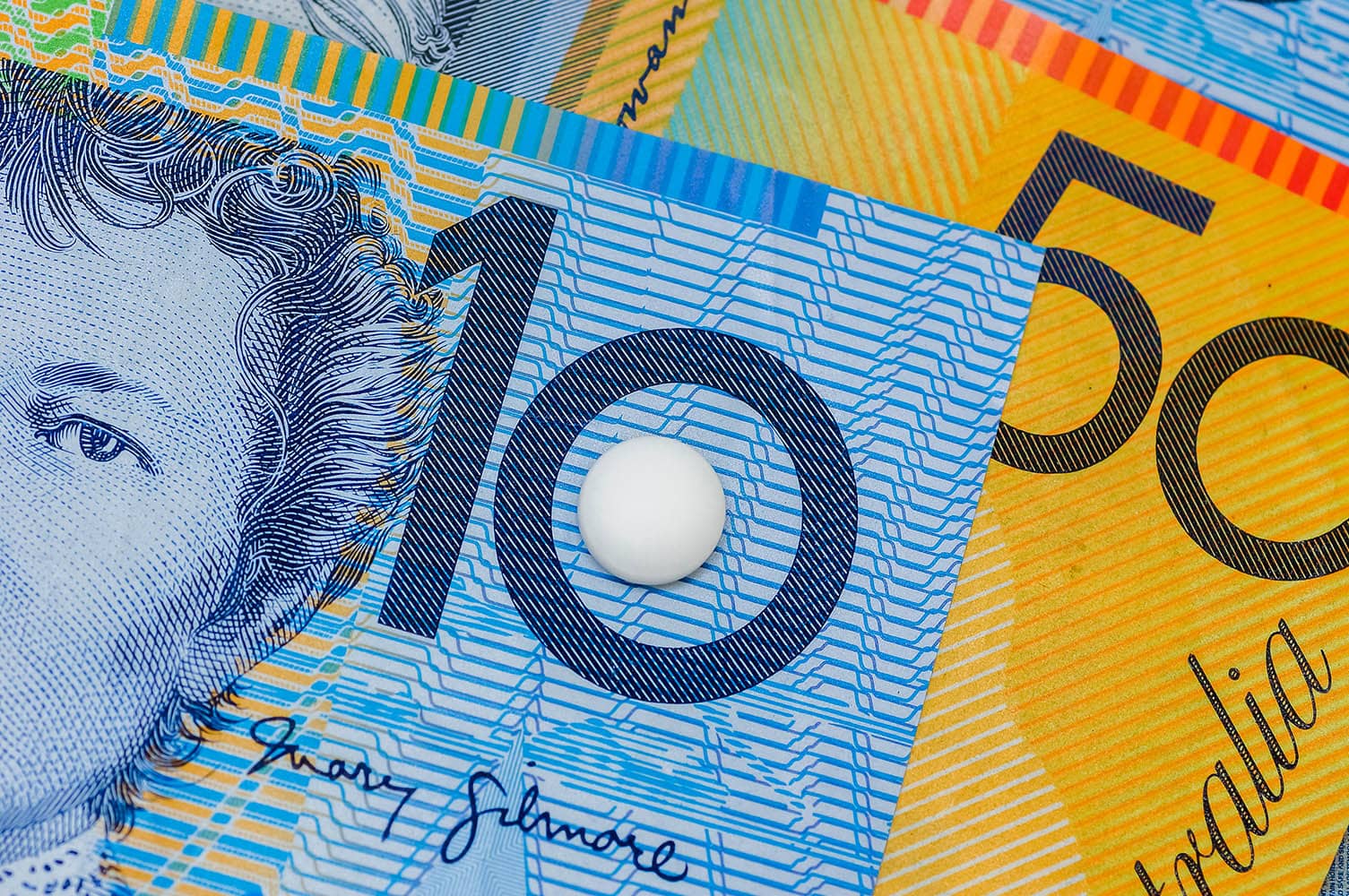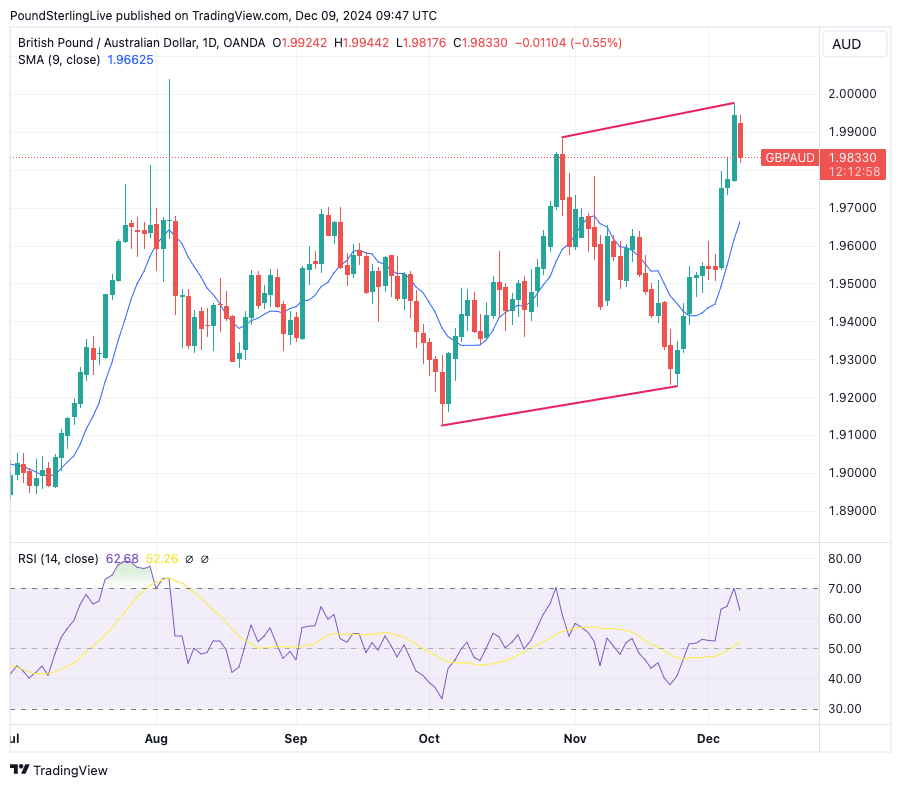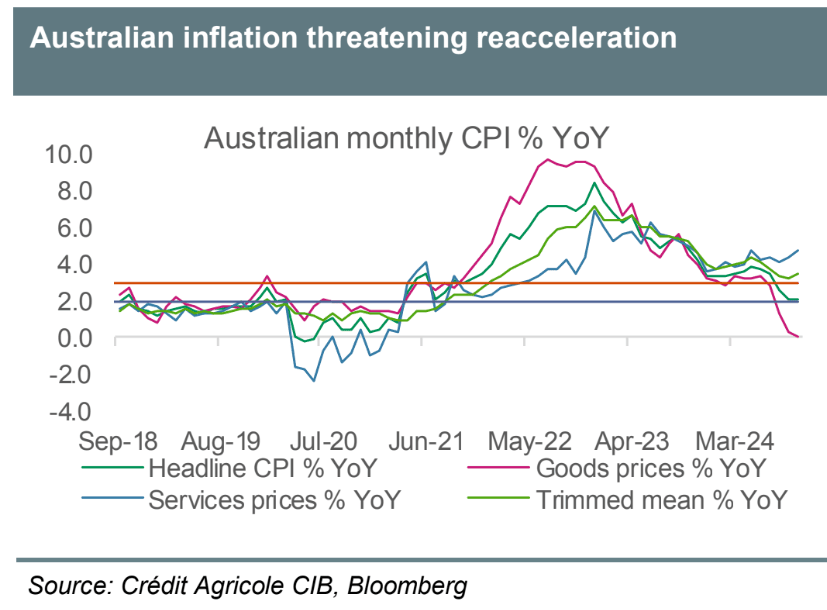Pound-Australian Dollar Week Ahead Forecast: A Leg Higher, RBA Risk
- Written by: Gary Howes

Image © Adobe Images
There has been a definite pick-up in upside momentum in the Pound to Australian Dollar exchange rate (GBP/AUD) of late. However, a pullback is likely during the next couple of days, with the focus turning to the RBA decision.
GBP/AUD broke to a new 2024 high last week, closing at 1.9943, something last achieved in August of 2023.
(Note that we are discounting that brief spike on August 05 that looked to be a liquidity-driven event in thin Asian trading hours and has little guidance from a technical or fundamental perspective.)
The strongest close of 2024 means we now see a potential leg higher in GBP/AUD evolving as it exits the July-October consolidative phase: higher lows and higher highs make for an uptrend.
The chart below confirms the recent down move ended at higher levels than the previous down move, and the recent high is higher than the peak of the previous updraught.
The pair is now above its 50-, 100- and 200-day moving averages, which ticks some obvious boxes for a medium-term uptrend.
However, we note that the pair hit overbought conditions last week (the RSI hit 70, as per the lower panel in the chart). A cooling-off period should be expected, which is consistent with the RSI dipping back.
The exchange rate is also now too far above the nine-day moving average, as history suggests it does prefer to hug this level. So, a pullback towards the rising nine-day MA (currently at 1.9663) is possible.
"Where month-to-date performance might be more immediately overextended is against the Antipodean currencies, GBP/AUD is nearing the top end of the trading range," says Nick Kennedy, FX Strategist at Lloyds Bank.
China News Supportive
At the start of the new week, there was some supportive news for the AUD. China's politburo meeting signalled that authorities are likely to be more proactive in supporting the world's second-largest economy in 2025.
Today's Politburo's official announcement stated that China's policy stance would now become 'moderately loose', whereas previously, it was to be 'prudent'.
This is the first time such a stimulative stance has been adopted since late 2010.
Further support could bolster the economy, which is Australia's most important trading partner and the reason why AUD is often traded as a China proxy.
RBA In Focus
The big domestic event for the AUD will be Tuesday's policy decision at the Reserve Bank of Australia (RBA), which will leave rates unchanged.
But, markets will be interested in hearing whether the RBA is more inclined to cut interest rates in early 2025.
Last week's surprisingly weak Australian GDP report caused markets to price in the first rate cut in April, whereas May was the previous preferred date.
The odds of a February move also increased, which explains why AUD fell and allowed GBP/AUD to print its highest close of the year.
The key question is whether or not the RBA validates this shift in expectations via the language it adopts to describe the outlook.
"The RBA will keep its cash rate unchanged at 4.35%, but the focus for the Australian rates market and the AUD will be whether the RBA shifts to a dovish bias, putting a February rate cut back on the table," says David Forrester, FX Strategist at Crédit Agricole.
Should the RBA validate market expectations, then AUD can stay under pressure.
However, the RBA decision statement risks disappointing this 'dovish' market pricing, warns Forrester.
"Inflation is still running above target and is showing signs of reaccelerating. The October retail sales and building approvals data point to a strong start to economic activity in Q4 and the likely nadir in GDP growth in Q3," he explains.
If markets are disappointed in this manner, AUD can rebound and send GBP/AUD lower.
"The Reserve Bank of Australia (RBA) meets on 10 December, and we expect it to keep the cash rate on hold at 4.35%. Third-quarter GDP was weaker than expected at 0.3% q/ q versus our below-consensus expectation of 0.4% q/q. A key question we've heard is: Could this outcome drive the RBA to ease policy earlier than May 2025? In short, not yet," says Dominic Schnider, Strategist at UBS Switzerland AG.
Schnider explains that recent comments by the RBA reinforced that core measures of inflation remain too high. Additionally, the minutes of the previous meeting signaled CPI data need to show further progress toward the midpoint of the 2-3% target.
The RBA could offer the opportunity for AUD to retake some of its recent losses.






